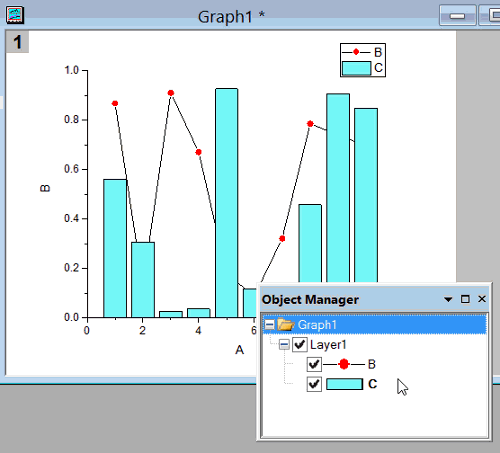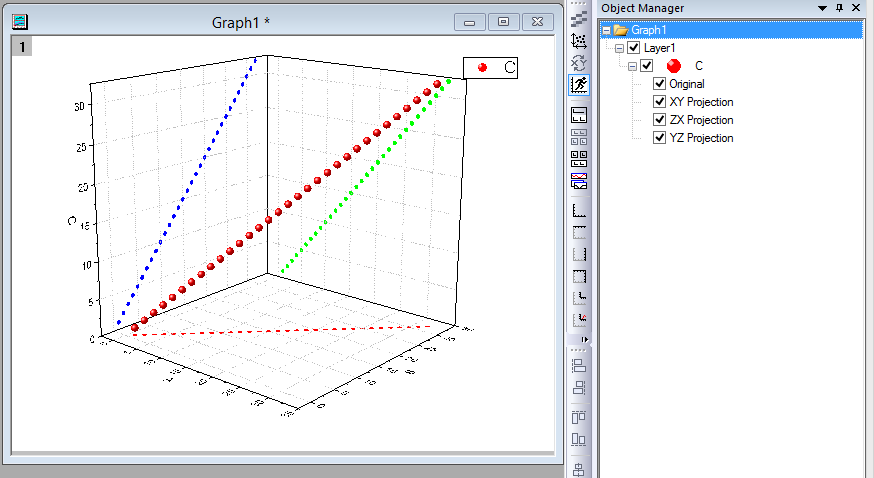
- HOW TO MAKE SCATTER PLOTS IN ORIGIN PRO 8.5 HOW TO
- HOW TO MAKE SCATTER PLOTS IN ORIGIN PRO 8.5 CODE
- HOW TO MAKE SCATTER PLOTS IN ORIGIN PRO 8.5 TRIAL
The cex.axis = argument requires a number giving the amount by which the text will be magnified (or shrunk) relative to the default value of 1. While we’re about it let’s also rotate the y axis tick mark labels so they read horizontally using by setting the las = 1 argument in the plot() function and make them a tad smaller with the cex.axis = argument. We can change this by setting the xaxs = "i" and yaxs = "i" arguments when we use the par() function. One of the things that we still don’t like is that by default the x and y axes do not intersect at the origin (0, 0) and both axes extend beyond the maximum value of the scale by a little bit. OK, that’s looking a lot better already after only a few adjustments.
HOW TO MAKE SCATTER PLOTS IN ORIGIN PRO 8.5 HOW TO
Lastly, this section covers the basics of how to customise base R graphics and most (if not all) of these approaches will not work for plots created with the lattice graphics system.
HOW TO MAKE SCATTER PLOTS IN ORIGIN PRO 8.5 TRIAL
This requires a little experience (and trial and error), but again becomes easier with practice. We often start with a basic layout of our plot and then add layers of complexity until we achieve the desired results.
HOW TO MAKE SCATTER PLOTS IN ORIGIN PRO 8.5 CODE
Thirdly, learning how to customise plots in base R isn’t just about what code you need to use, it’s also about learning the process of building a plot. Often a quick Google or peek at the relevant help pages will jog your memory. This isn’t necessarily a bad thing as this is what makes base R graphics so flexible but it’s a lot to take in. Secondly, when you start customising plots you’re confronted with a huge number of options and arguments to try and remember.

If you crave a little more consistency take a look at Chapter 5 where we introduce the excellent ggplot2 package.

This can be a little frustrating to begin with but gets easier the more experience you gain. What works with the plot() function isn’t guaranteed to necessarily work with the boxplot() function. Firstly, although many of the approaches we introduce in this section will work with most base R plotting functions, there’s no true consistency between functions. There are however a couple of things to bear in mind. The good news is that the base R graphics system allows you to change almost any aspect of your plot. If however, you’d like to make them a little prettier (for your thesis, publication or even your own amusement) you’ll need to invest some time learning how to customise your plots.

1.4.2 Integrated developement environementsĪll of the plots we’ve created so far in this Chapter are more than suitable for exploring your data.To control the polar axis, refer to this online help. (All above are installed to the Origin program folder). POLARXRYTHETA.OTP for Polar r(X) theta(Y). Symbol Polar: From menu, choose Plot > 2D: Polar: Symbol theta r/Symbol r theta.Line+Symbol Polar: From menu, choose Plot > 2D: Polar: Line+Symbol theta r/Line+Symbol r theta.Bar Polar: From menu, choose Plot > 2D: Polar: Bar theta r/Bar r theta.Or Click the Polar theta(X) r(Y) button on the 2D Graphs toolbar. From the menu, choose Plot > Specialized: Polar theta(X) r(Y)/Polar r(X) theta(Y).When using Polar theta(X) r(Y) to plot a graph, X represents the Angular (Units are in degrees) and Y is the Radius, and when using Polar r(X) theta(Y), X is the Radius and Y represents the Angular (Units are in degrees).


 0 kommentar(er)
0 kommentar(er)
